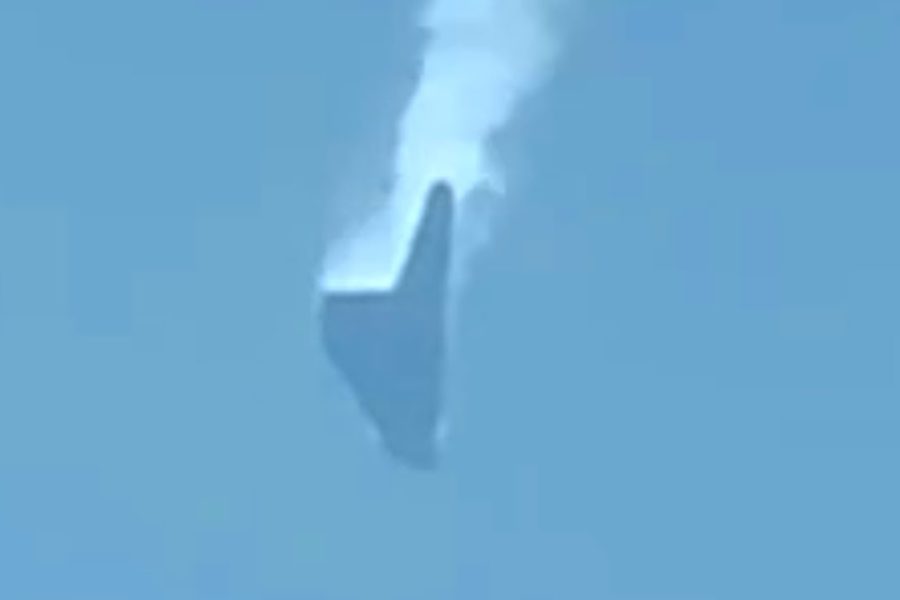The wreckage of one of Russia’s newest stealth drones is now in the hands of the Ukrainian forces—a potential intelligence windfall for that country and its partners—after a Russian fighter chased, then shot it down over Ukrainian territory Oct. 5.
A series of videos posted to social media show a Russian fighter—likely an Su-57 Felon—shooting down the S-70 Okhotnik (Hunter-B) north of Donetsk with a short-range air-to-air missile. Further footage showed the flying-wing-type aircraft spiraling to the ground, where the wreckage was claimed by Ukrainian forces.
Although much of the aircraft was destroyed, the outer wing of the S-70 landed largely intact, and the engine, though crushed on impact, was also mostly in one piece. Portions of a Russian glide bomb were found among the wreckage.
A former Pentagon official told Air & Space Forces Magazine the wreckage could provide “tremendous insight” into the state of Russian drone and stealth technology, as the S-70 is believed not to have entered series production. The official, after reviewing imagery of the wreckage, said the drone doesn’t “obviously show us” any advanced low-observable technology. Lab analysis will be required to assess the materials used in its construction.
He speculated that the wreckage might confirm whether any technology recovered after a U.S. Air Force RQ-170 drone crashed in Iran in 2011 had been reverse-engineered by Iran and/or Russia, which have collaborated on drone projects. Iran has been supplying Russia with drones for both reconnaissance and attack since the Ukraine campaign began.
It isn’t clear why Russia shot down the drone, but it’s possible operators lost control of the aircraft during a test over Russia. It’s also possible the aircraft was conducting a live operational test to see how it performed against Ukrainian air defenses.
The Su-57 and the S-70 were observed flying together, and the Russian defense ministry has previously published photos of the duo in flight, saying they could form a manned-unmanned team for air defense and attack. Russian officials have said that the Okhotnik can “extend” the reach of the Su-57’s radar.
However, a former senior Air Force official said the S-70 clearly “was not escorting” the Su-57, and they were not conducting a manned-unmanned teaming mission. He also discounted the idea that the S-70 was testing out the same kinds of capabilities eyed for the U.S. Air Force’s nascent Collaborative Combat Aircraft program.
“I would not say this was a ‘CCA’ at all… more likely it was a UCAV [Unmanned Combat Air Vehicle] that lost control and the Russians sent a Su-57 to shoot it down,” he said.
A military aerospace analyst familiar with Russia’s drone program said “China is pursuing CCA—that we know. Russia, not so much.”
The S-70 is a large aircraft, with a 65-foot wingspan. It was developed over the past 12-14 years, and underwent flight tests between 2019 and 2023. It has been speculated that limited series production was to begin in the second half of calendar 2024, so it’s possible the mission was a developmental or operational test prior to production commencing.
The former Pentagon official said it is also surprising that the Russians exposed their Su-57 to Ukrainian air defenses, since Russia only has about 30 Felons, of which a dozen are test-configured and the rest operational.
“They must have had a good reason,” he said.
It is also possible, if unlikely, that the entire incident was staged. In that case, Russia may have intentionally put an obsolete or deliberately-misleading airframe in western hands to get Ukrainian and NATO air defenses to waste effort hunting for a drone “that isn’t coming,” the official suggested.
